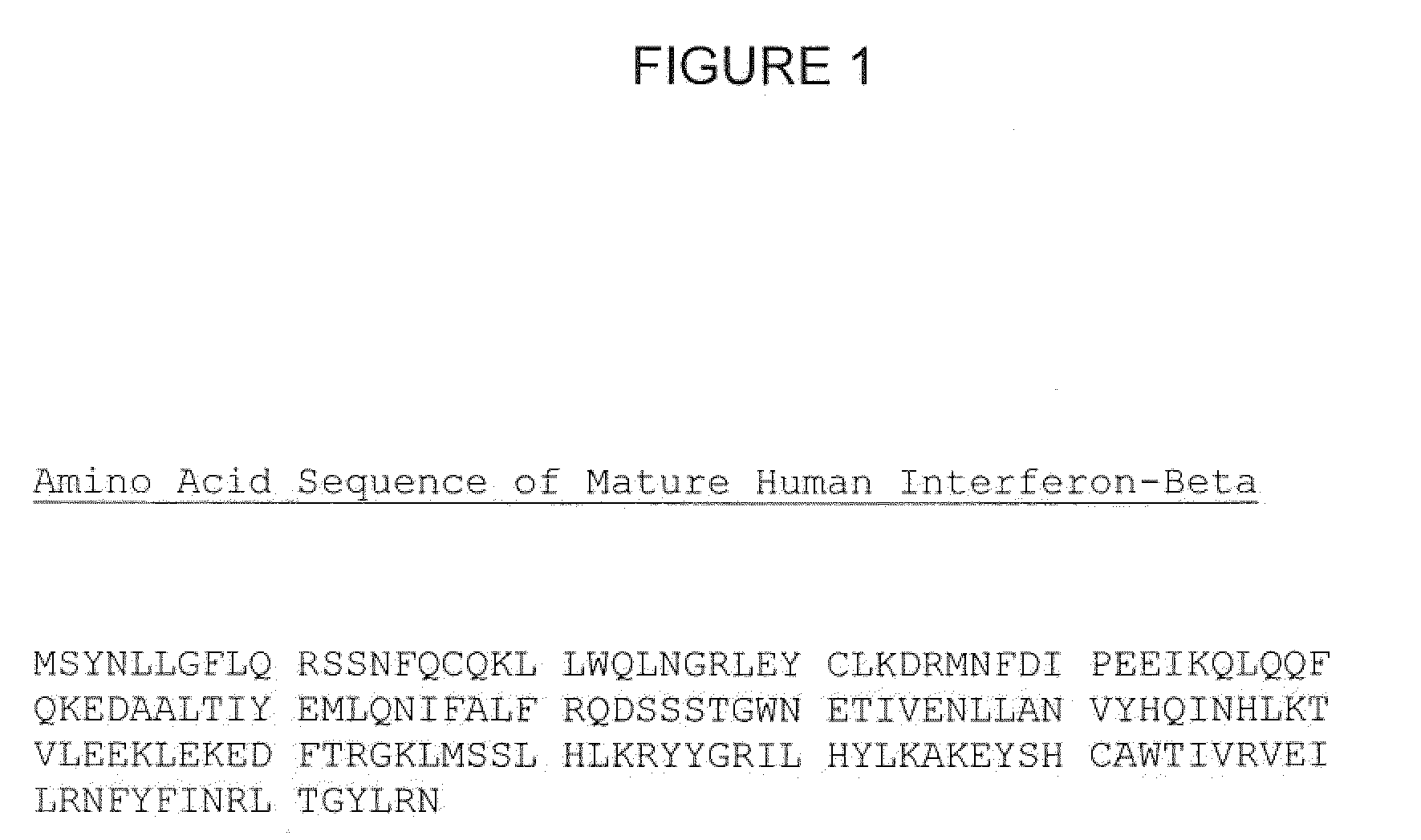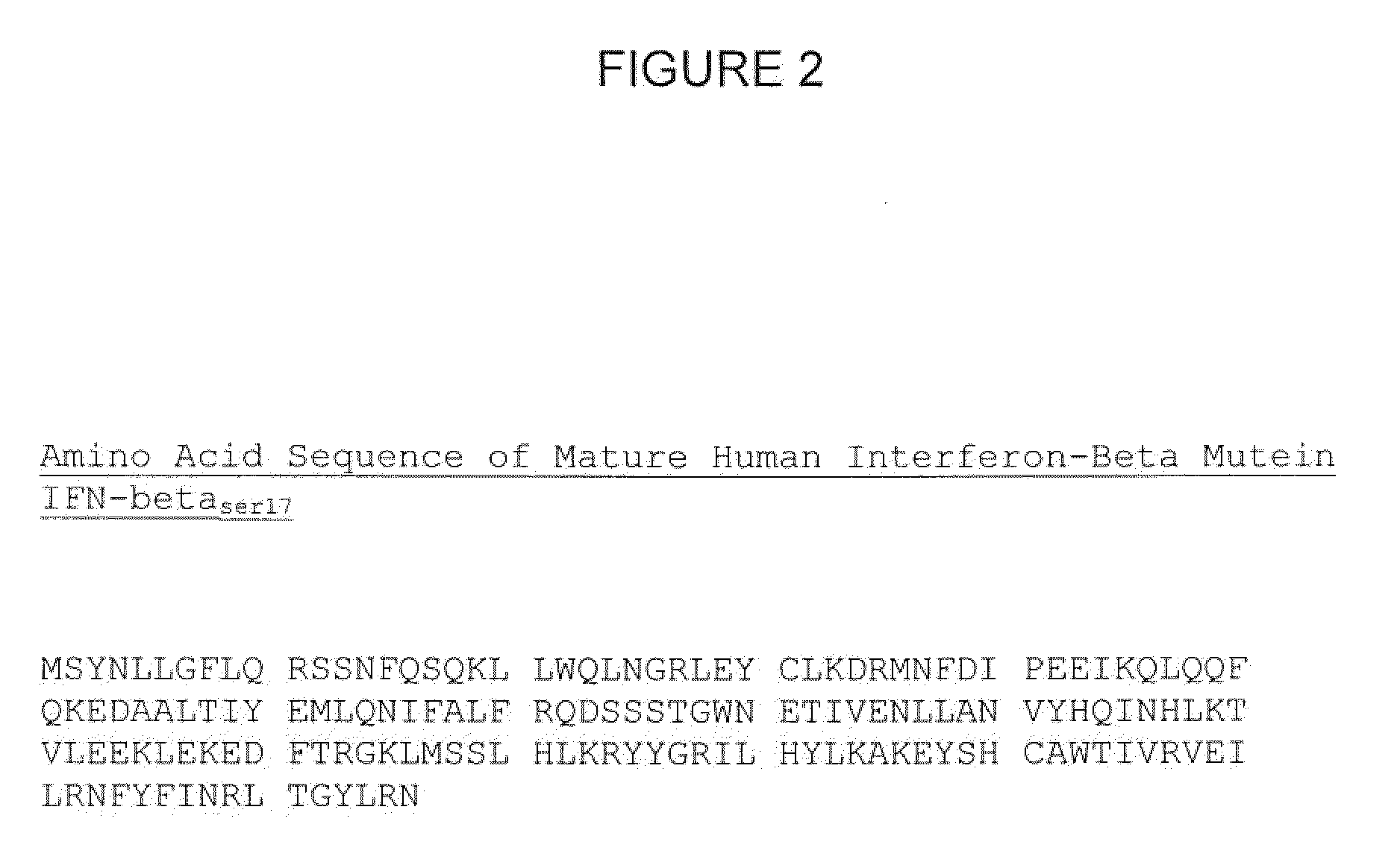Method for treating multiple sclerosis
a multiple sclerosis and treatment method technology, applied in the field of multiple sclerosis treatment, can solve the problems of repeated unpredictable attacks, serious impairment of the ability of oligodendroglial cells to repair damaged myelin, damage to nerve-insulating myelin, etc., to reduce adverse side effects and maximize clinical efficacy
- Summary
- Abstract
- Description
- Claims
- Application Information
AI Technical Summary
Benefits of technology
Problems solved by technology
Method used
Image
Examples
example 1
Pilot Clinical Trial Design Intended to Measure the Efficacy and Safety of a New Interferon-Beta Dosing Regimen
[0061]A pilot clinical trial is undertaken to measure the efficacy and safety of a new interferon-beta dosing regimen. Two dosing arms are included: Interferon-beta-1a at 6 MIU (30 ucg) administered intramuscularly once per week plus placebo administered once per week, versus interferon-beta at 6-12 MIU (30-60 ucg) administered intramuscularly twice weekly. A sample size of n=300-500 patients per arm is used. The duration of the study is 2 years, with a 1-year interim safety and efficacy analysis. The primary endpoint is time-to-confirmed disease progression or treatment failure as measured by EDSS or Multiple Sclerosis Functional Composite Score (Rudick (2001) Neurology 56(10): 1324-1330.
[0062]Secondary endpoints include relapse rate-related endpoints and MRI measurement-related endpoints. Tertiary endpoints include cognitive function-related endpoints and quality of life-...
PUM
| Property | Measurement | Unit |
|---|---|---|
| frequency | aaaaa | aaaaa |
| magnetic resonance imaging | aaaaa | aaaaa |
| MRI | aaaaa | aaaaa |
Abstract
Description
Claims
Application Information
 Login to View More
Login to View More - R&D
- Intellectual Property
- Life Sciences
- Materials
- Tech Scout
- Unparalleled Data Quality
- Higher Quality Content
- 60% Fewer Hallucinations
Browse by: Latest US Patents, China's latest patents, Technical Efficacy Thesaurus, Application Domain, Technology Topic, Popular Technical Reports.
© 2025 PatSnap. All rights reserved.Legal|Privacy policy|Modern Slavery Act Transparency Statement|Sitemap|About US| Contact US: help@patsnap.com



